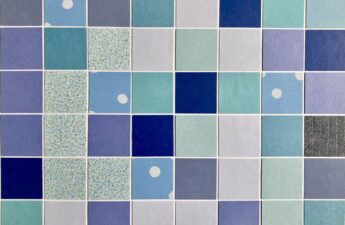One of my favorite things to do on the first day of a math class is to get my students thinking about what math is and how they use it. I once had a student in a community college class who made it his mission to prove to me that it is possible to go an entire day without using math.
At. All.
Think about it. Can you go through an entire day without any math?
If you think that it is easy to avoid math, let me ask you a few questions.
Do you use a clock? If you do, then you must read it, right? Whether you are looking at an analog or digital display, you are using math when you read it. You tell the time, you evaluate how much time you have to get where you need to go (that’s algebra!), and you make decisions about how early you need to set your alarm (also algebra!).
Do you cook or prepare any meals? When you pour your breakfast cereal into your bowl, you are estimating how much cereal you can eat. (You also choose the size of your bowl based on this estimate.) Add some milk and you are creating your preferred cereal to milk ratio. Preparing a freezer meal in the microwave means using a timer, following a sequence of instructions (that’s a pattern!) and recognizing numerals. Cooking dinner from a recipe probably requires some kind of fraction use, especially if you are adjusting it for a number of servings that is different than the recipe usually makes. Cooking often allows you to use your measuring, estimating, sequencing, and timing skills.
Do you check your calendar or use a planner? Most of our days involve some kind of routine. A routine is a repeated sequence of events. For example, wake up, eat breakfast, brush teeth, get dressed, go to school. That’s a pattern. We often keep track of important changes to our routine using a calendar, which in itself is another pattern. A pattern of days, weeks, months, and years. Making sure we enter that dentist appointment or that teacher conference in the correct block of time on the calendar requires pattern recognition. Often, there’s also some kind of logic involved in making our plans for the week. This week, for example, my son had a soccer game on the same night as the school open house and on the one day of the week that I work the latest. I planned my meal for the day before so that I would have enough leftovers to avoid having to eat super late or head to the nearest drive-thru.
Do you search for the best deal at the grocery store? When you are trying to decide which jar of spaghetti sauce is the best deal, you can’t always rely on the price. If the jars are identical in volume (math concept!) you can compare the prices directly (decimal comparison). If they have different volumes, then what you really have to compare is the unit price. That is, price per ounce. Nowadays, most shelf tags include the unit price, so you don’t have to do anything but compare them. Sometimes, they don’t, so you have to divide the price by the number of ounces before comparing. Still. Math.
Do you have a bank account? These days, most of us keep our money in a bank instead of under the mattress or buried in the back yard. Managing your budget so that you have enough money for all of your expenses requires several math related skills. Planning is a logical process (which is mathematical in nature) that requires knowing how much we usually spend on different categories of items and services (this is gathering and organizing data and sorting), prioritizing needs, and allotting certain amounts of money to each expense so that we keep everything within the amount of our monthly income. We also have to keep track of our deposits (addition) and debits (subtraction) so that we don’t spend more than we have.
Do you drive? If you drive a car, you probably pay attention to the speed you are driving. Speed is a rate that compares the distance you are traveling to the amount of time it takes you to travel it. You might also be estimating how fast you need to go to get to your destination on time, especially if you are running late. You know it’s time to buy gas when the gauge gets low (this is kind of like reading a graph) and when you fill up your tank, you might be choosing a gas station based on the price of gas per gallon (decimal comparison and unit rates).
How else do you use math during your day? These are just some of the ways we use math as we go about our daily routines. Many of us have jobs that require us to count money, analyze data, or solve problems. No matter what your job or your daily routine looks like, I challenge you to find the math that is hidden in your everyday tasks. Let’s start the conversation with our children about what math is and when we use it so that they can begin to see math and mathematical thinking as a useful tool.
I’d love to hear some of the other ways you use math on a daily basis. Leave your ideas in the comments!




I teach four and fifth graders with learning disabilities. One of the great ways we use math is when students need to count out their money at the school store or at a book fair. These days in the cafeteria, most use a prepaid card, but for some that is another place where they can get some practice in. Great post!
Yes! Counting money! I tutor a rising 5th grader and his mom mentioned he didn’t know how to count money because the class didn’t get to it in second grade. I rarely carry cash anymore, but it is an important skill to have. Thanks for visiting!
This is so fun! I want to challenge my 6th graders to do this – I think they it would lead to a great conversation! Thank you for sharing 🙂
I never thought about using this as a discussion starter for middle schoolers! I am heading back to the middle school classroom in a few weeks and will add this to my list. Thanks for the idea!
This is a great concept. I knew that I use math all the time, but I’ve never noticed just how many things I use it for.